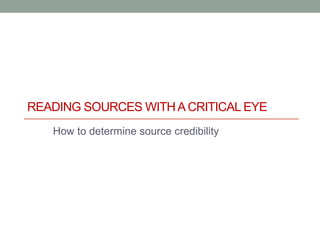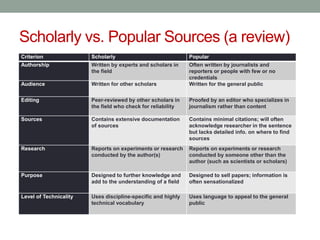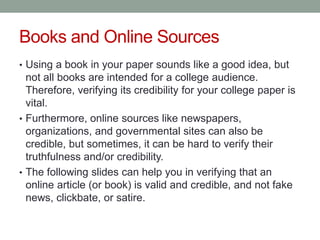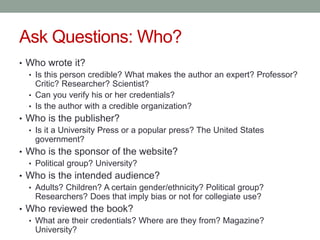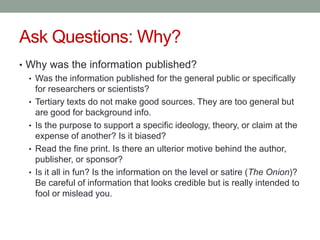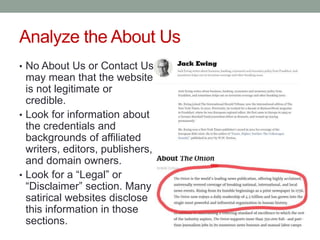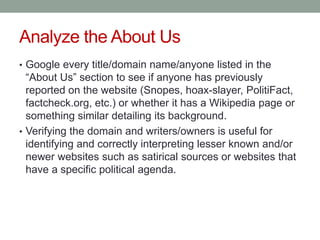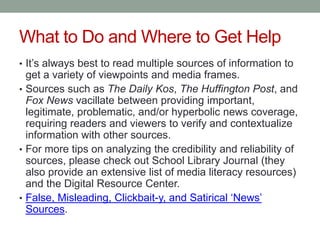The document provides a comprehensive guide on evaluating the credibility of sources, distinguishing between scholarly and popular sources by examining authorship, audience, editing process, and purpose. It outlines critical questions to assess the credibility of information, including who created the content, what the intent is, when it was published, and how the information can be verified. Emphasizing the importance of thorough analysis, the document encourages readers to cross-reference information against multiple reliable sources to enhance understanding and avoid misinformation.
